“If you talk to a man in a language he understands, that goes to his head. If you talk to him in his language, that goes to his heart.” — Nelson Mandela
Every once in a while, some particular type of technology will catch my eye, and I will start to investigate it, probably much more than I should. I will obsess over it, trying to squeeze more out of it than it may deserve.
This started when I was in 6th grade and Mr. Whatley, the assistant principal, asked me to be the school projectionist, running the 16mm projectors for all of the teachers who had difficulty threading the films from the reel in the front of the projector to the reel in the back of the projector. My role as helper continued (it’s still what I do today, in a way). And my compulsion to probe the limits of various technologies continued as well — calculators with ridiculous numbers of buttons, Apple IIc clones, my Atari 1040ST, my Macs, my iPads, phones and pods.
My latest obsession is language translation software for my various i-devices. It started off innocently enough, with an iPhone program by Quest Visual called “Word Lens.” (http://questvisual.com/). To me it sounded like magic when it came out. With Word Lens, they claimed, you could point your iPhone at a sign in Spanish, and in real time, you would get back a translation into English.
You point your phone camera at the sign that might say, oh, “ALTO” in Spanish and the program translates it for you. Sounds kind of boring, but here is the kicker: it keeps the sign that you are pointing at in place and just replaces the word. So the sign that said ALTO now says “STOP.” The sign background stays the same. It was amazing!
I thought it was a joke when I first saw the video that demonstrated it, but then I downloaded the app, and it does what it claims! At a local Walgreens, I was standing in line and I saw this sign:
I turned on my Word Lens app, and this was the translation:
Pretty awesome. Word Lens got me going into the world of translation apps — but it just the beginning. I was soon answering the siren call of Google Translate.
La tarea de matematicas
The Google Translate App for iPhone can do three things:
– It can understand your spoken voice.
– It can translate your voice into 15 languages.
– It can them speak the translated phrase back to you.
Suppose you need to tell a parent in Spanish that they need to help their child with their math homework. Simply speak into the onscreen microphone prompt:
“Please make sure that your son does his math homework every night.”
In about 2 seconds, it gives you a confirmation of what you said in English, written on the screen. The program then gives you a Spanish translation. (Or one of the 14 other languages you might choose.) In this case the translation was:
“Por favor, asegûrese de que su hijo hace la tarea de matematicas cada noche.”
But that is not all, it will also speak the translation: Google Translate audio file
The Google Translate app won’t translate large amounts of text or spoken language, but it handles phrases and short sentences that are clearly spoken in a quiet room very well. And if you need to communicate with a parent who’s not quite sure what you are saying, this could be helpful for school folks and for families.
Boldly going where no app has gone before
With the Word Lens and Google Translate apps, we are on our way to actually having conversations with each other, no matter what corner of the galaxy we might inhabit.
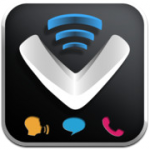 Remember the Universal Translator that Gene Roddenberry envisioned in Star Trek back in the 1960’s? It helped explain why all of the aliens on each planet were fluent in English. Another new app is getting us closer to Roddenberry’s imaginative solution. It’s called VOCRE, from My Language (http://www.vocre.com/). It promises that you can carry on a near real-time conversation with someone in another language using an i-Device.
Remember the Universal Translator that Gene Roddenberry envisioned in Star Trek back in the 1960’s? It helped explain why all of the aliens on each planet were fluent in English. Another new app is getting us closer to Roddenberry’s imaginative solution. It’s called VOCRE, from My Language (http://www.vocre.com/). It promises that you can carry on a near real-time conversation with someone in another language using an i-Device.
It’s pretty simple:
Choose the language you wish to translate to and from. Say, English to Spanish. You speak English into the iPhone and VOCRE almost immediately translates and speaks what you said. Then the other person speaks into your phone and what they say is translated back to you. Here’s a video with the founder of My Language talking about how the program works:
It is technology, not magic. Almost instantaneous universal translation.
True global collaboration
It’s apparent that this technology is in its nascent stage and will only get better. Right now it’s limited to short phrases but it’s sure to get faster and faster and manage longer and longer pieces of conversation.
Imagine this:
Mix these evolving translation technologies, both visual and audio, and then combine them into a program like Facetime or Skype. Suddenly, you have people from anywhere in the world being able to carry on conversations with anyone else in the world. Language will no longer be a limiting factor when people in different cultures and language communities want to share information or go deeper into true collaboration.
 So, if technology will be able to do this, where does that leave the future of foreign language classes? Are they doomed to fall away because technology will be able to replace them? If the purpose of a foreign language class is to teach people to communicate in another language, and the technology will be able to do that for us, what will become their purpose?
So, if technology will be able to do this, where does that leave the future of foreign language classes? Are they doomed to fall away because technology will be able to replace them? If the purpose of a foreign language class is to teach people to communicate in another language, and the technology will be able to do that for us, what will become their purpose?
Perhaps the language teachers who survive this technology shift will be those who are experts on the cultural nuances of the languages they specialize in. You’ve probably heard the expression, “It loses something in the translation.”
Say, wasn’t there a Star Trek/Next Generation episode about that little problem?
Tim Holt
Latest posts by Tim Holt (see all)
- Problem-Based Learning: Our Brains Abhor Cliffhangers - June 6, 2013
- The Ultimate Education Reform: Messy Learning & Problem Solving - April 19, 2013
- Why Problem-Based Learning Is Better - January 10, 2013

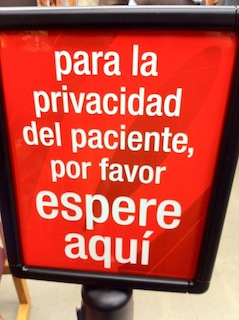
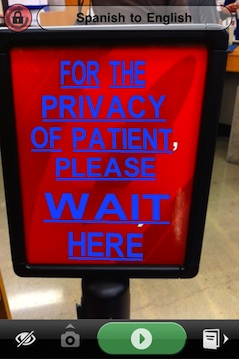
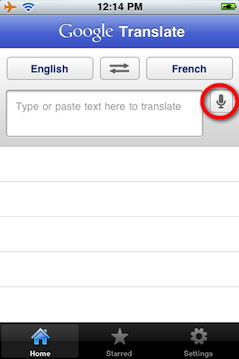
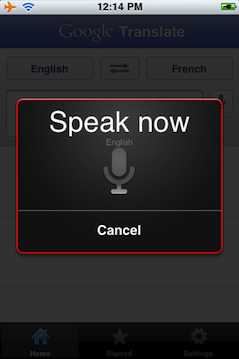

Hey, Tim – very cool tech – and I think you’re right about global collaboration. We’ll soon be able to have students talking to each other without human translators as they share their learning, lives and cultures. Awesome.
I remember that Star Trek/TNG episode – Darmok, with Paul Winfield as the alien who spoke in metaphor. Excellent episode for us English/LA geeks!
http://www.startrek.com/database_article/darmok
John, what is of great interest to me is how this will disrupt the foreign language classes or even the English as a Second Language classes. A student with a device is now no longer hobbled in class because he or she cannot ask a question. Simply speak into an iDevice and the phrase is translated for the teacher.
Teachers can now talk to parents in other languages without the need of a translator. Simply say the phrase, and let the device do the work.
I am so glad I live in the time I am living in!
Tim – I’d think any class where teacher and student are challenged by a language gap. And your example of teacher and parent extends out into community based work too. My wife works with 0-3 yr olds with developmental delays and is dependent on human translators to ask even the simplest questions as she works in homes with children and parents. She was very intrigued by your article.
Enhanced Communication + Understanding = Peaceful World
Linguistics will continue to grow only in the fields social sciences: anthropology and history and focuses on procedural languages will be a must in every aspect of society. All devices will need a better battery life in order for the traveler or 3rd world citizen to recharge. Instead of pay phones, we need recharging stations. 🙂
Apple is piloting solar powered iPads in Africa as we speak…So maybe it isn’t too far off!
hi I’m a student, I read your article and its almost the same as my app from my iPhone its called speechtrans that allows you to translate your assign language. this is the website http://speechtrans.com/ Its a good thing I got to know your article so i can also add this to my phone
thank you so much 🙂
An even more popular look is the sheep-skin, mid-calf boot. One of the most common similarities between the two is their surviving skills. The following day the road is returned to normality and is ‘business as usual’. cods This place has a tinge of history, along with a series of special rides that are purely enjoyable. Fortunately, there are ways to gain some insight into what exactly he’s feeling without having to back him into a corner by asking countless questions.